Li-Ion Vs. Lipo Battery For Long-Range Flights
When it comes to long-range flight applications, selecting the right battery technology is crucial for maximizing performance and efficiency. Among the most prominent choices are Lithium-Ion (Li-ion) and Lithium Polymer (LiPo) batteries. Both battery types have unique features and benefits that cater to different needs, making the decision between them highly dependent on specific use-case scenarios. This article delves into a comprehensive comparison of Li-ion and LiPo batteries, exploring their key features, benefits, and practical considerations to help you make an informed choice for your long-range flight needs.
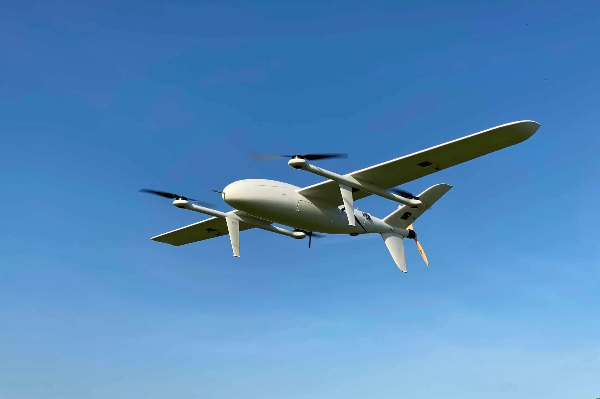
Understanding Li-ion Batteries: Key Features and Benefits
Li-ion batteries, or lithium-ion batteries, stand as a prominent technology in the world of portable energy solutions. Their widespread adoption can be attributed to a variety of distinctive features and benefits that make them suitable for long-range applications. Noteworthy features of Li-ion batteries include:
●High Energy Density:
Li-ion batteries offer a high energy density, allowing them to store more power in a smaller and lighter package. This characteristic is paramount for applications requiring long-range performance without adding significant weight.
●Long Cycle Life:
These batteries boast an impressive cycle life. They can endure numerous charge and discharge cycles before their capacity dips below a usable threshold. This durability ensures longevity, reducing the need for frequent replacements.
●Low Self-Discharge Rate:
Unlike some other battery technologies, Li-ion batteries have a low self-discharge rate. This means they retain their charge for extended periods when not in use, promoting readiness and reliability.
●High Efficiency:
Li-ion batteries exhibit high charging and discharging efficiency. This means less energy is lost during these processes, ensuring that the maximum amount of stored energy is available for use.
The benefits of adopting Li-ion batteries for long-range purposes encompass several aspects:
●Weight Reduction:
The lightweight nature of Li-ion batteries is crucial in applications demanding extended operational ranges, such as drones or electric vehicles, where total system weight significantly affects performance and efficiency.
●Consistent Power Output:
These batteries can deliver consistent power over their discharge period. This trait is particularly beneficial for high-demand applications needing steady and reliable power output.
●Environmental Impact:
The advanced technology in Li-ion batteries tends to have a lower environmental footprint compared to older battery types. Additionally, they can be recycled, contributing to sustainable energy practices.
●Safety Features:
Modern Li-ion batteries are designed with safety in mind. Features like integrated protection circuits help prevent overcharging, overheating, and short circuits, enhancing their operational safety.
Understanding LiPo Batteries: Key Features and Benefits
Lithium Polymer (LiPo) batteries are notable for their high energy density, making them suitable for various high-performance applications. These batteries are often the preferred choice for remote-controlled devices, drones, and other hobbyist electronics due to several key features.
Key Features
●High Energy Density
LiPo batteries offer an impressive energy density, meaning they can store more energy per unit of weight compared to other battery types. This makes them particularly beneficial for applications requiring lightweight yet powerful energy sources.
●Flexible Shape and Size
The polymer electrolyte allows LiPo batteries to be manufactured in a wide variety of shapes and sizes, accommodating different design needs. This flexibility is especially useful in custom builds and small devices.
●High Discharge Rates
LiPo batteries can deliver high discharge rates, ensuring that devices receive the required power without delay. This is crucial for applications such as drones that demand rapid bursts of energy.
●Stable Voltage Supply
LiPo batteries provide a consistent and stable voltage throughout their discharge cycle. This stability enhances the performance of electronic devices, especially those sensitive to voltage fluctuations.
●Lightweight Design
Weight is a critical factor in mobile and aerial applications. LiPo batteries are lighter than other battery types of the same capacity, making them ideal for drones and portable electronics.
●Low Self-Discharge Rate
Over time, batteries tend to lose their charge. LiPo batteries have a low self-discharge rate, which means they retain their charge for longer periods when not in use, increasing their reliability.
Benefits
●Extended Flight Times
In drones, the high energy density and lightweight characteristics of LiPo batteries contribute to longer flight times, providing enthusiasts with more time in the air per charge.
●Enhanced Power Delivery
The high discharge rates ensure that devices like remote-controlled cars and planes have the instantaneous power they need for rapid acceleration or complex maneuvers.
●Customized Fit
The ability to manufacture LiPo batteries in various shapes and sizes allows for a tailored fit within the device, optimizing space and potentially enhancing overall device performance.
●Reduced Device Weight
By minimizing the weight, LiPo batteries enable the creation of lighter end products, which is crucial for handheld and portable applications.
●Longevity in Storage
The low self-discharge rate ensures that LiPo batteries remain ready to use even after extended periods of storage, which is beneficial for seasonal devices.
Energy Density Comparison: Li-ion vs. LiPo
Energy density is a key factor when comparing batteries for long-range applications. Li-ion and LiPo batteries offer different metrics in this regard.
Li-ion Batteries
Li-ion (Lithium-ion) batteries are popularly known for their high energy density. This quality makes them suitable for applications requiring prolonged power:
●Gravimetric Energy Density: Li-ion batteries typically offer around 150-250 Wh/kg.
●Compactness: The higher energy density means these batteries can store more energy in a smaller space.
●Durability: Li-ion cells often feature better charge cycles, maintaining their energy levels over extended use.
LiPo Batteries
LiPo (Lithium Polymer) batteries, while slightly different in their chemistry and structure, have their own set of advantages:
●Gravimetric Energy Density: LiPo batteries generally provide about 100-200 Wh/kg.
●Flexibility in Shape: The soft, pouch-style casing allows for varied battery shapes, useful in space-constrained designs.
●Weight Considerations: Despite a potentially lower energy density, LiPo batteries can be lighter, contributing to better weight distribution.
Practical Comparisons
When selecting between Li-ion and LiPo for long-range scenarios:
●Flight Duration: Li-ion batteries are preferred for longer flight times due to their higher energy density.
●Weight Distribution: LiPo batteries, with their flexible form factor, can be arranged for optimal weight balancing, aiding maneuverability.
●Cost: Typically, Li-ion batteries can be more expensive owing to their performance benefits.
●Safety Profiles: Both types have safety considerations, but LiPo batteries are often viewed as slightly riskier due to their pouch design susceptibilities.
Ultimately, the choice between Li-ion and LiPo batteries hinges on specific requirements such as duration, weight, cost, and safety priorities.
Weight Considerations for Long-Range Flights
When examining Li-ion and LiPo batteries for long-range flights, weight is a critical factor. The energy density and weight efficiency play a pivotal role in performance and flight duration.
Key points regarding weight considerations include:
Energy Density
Li-ion batteries exhibit higher energy density compared to LiPo batteries.
This higher energy density allows Li-ion batteries to store more energy per unit of weight, which is advantageous for long-range flights.
Structural Composition
LiPo batteries generally have a lighter structural component due to their pouch design.
Contrarily, Li-ion batteries use a cylindrical or rectangular format, which can contribute to slightly heavier packaging despite higher energy density.
Weight-to-Capacity Ratio
Li-ion batteries often provide a better weight-to-capacity ratio, meaning they can deliver more capacity without a significant increase in weight.
This ratio is crucial for drones or UAVs where every gram matters to ensure the maximum flight time.
Battery Pack Configuration
The configuration of battery cells can influence the overall weight.
Li-ion cells are often configured in a way that optimizes space and minimizes unnecessary weight, while LiPo cells may sometimes require additional protective layers that add to the overall mass.
To summarize the differences:
Li-ion Batteries:
●Higher energy density.
●Slightly heavier due to the casing.
●Better weight-to-capacity ratio.
LiPo Batteries:
●Lighter structural design.
●Potentially bulkier due to additional protection layers.
●Considering these aspects, the choice between Li-ion and LiPo will depend heavily on the specific needs and constraints of the flight operation, balancing capacity, weight, and overall efficiency.
Safety and Durability: Li-ion vs. LiPo
Comparing Li-ion and LiPo batteries reveals distinct differences in their safety and durability:
Li-ion Batteries:
●Safety: Li-ion batteries are generally safer. They feature robust casings that protect against physical damage. Additionally, they employ protection circuits to prevent overcharging, over-discharging, and short circuits. These built-in safety features reduce the risk of thermal runaway, thus lowering the likelihood of fires and explosions.
●Durability: Li-ion batteries are known for their longevity. With proper care, they offer a longer lifespan and a higher number of charge cycles. Their lower self-discharge rate ensures that they retain charge over extended periods, making them suitable for long-term storage and irregular use.
LiPo Batteries:
●Safety: LiPo batteries are more susceptible to physical damage due to their soft, flexible packaging. This vulnerability increases the risk of punctures and subsequent fires. They also lack the multiple protection layers found in Li-ion batteries, making careful handling crucial. Overcharging or mechanical damage can lead to dangerous outcomes.
●Durability: While providing high energy density, LiPo batteries require meticulous maintenance. They tend to degrade faster than Li-ion batteries and have a higher self-discharge rate. Users must adhere to specific storage and usage guidelines to prolong their lifespan, such as maintaining a balanced charge and avoiding complete discharges.
Key Points to Consider:
●Use Case: Li-ion batteries are ideal for applications requiring long-term reliability and safety, such as in smartphones and laptops.
●Handling: LiPo batteries demand careful handling and thorough monitoring during charging and use. They are favored in high-performance applications like drones and RC vehicles due to their superior power delivery.
●Storage: Li-ion batteries exhibit superior performance during extended storage periods, whereas LiPo batteries may require periodic maintenance checks to ensure longevity.
Understanding these differences, users can make informed decisions to maximize both safety and durability.
Charging and Discharging Characteristics
When considering Li-ion and Lipo batteries for long-range applications, the characteristics of charging and discharging play critical roles.
Li-ion Batteries:
Charging Characteristics:
●Voltage and Current: Li-ion batteries typically charge at a lower voltage and current compared to Lipo batteries. Standard charging often occurs at 4.2 volts per cell, with currents usually around 0.5C to 1C, where C represents the battery's capacity.
●Efficiency: Li-ion batteries are known for their high charging efficiency, often exceeding 90%. This efficiency reduces energy loss during the charging cycle.
●Cycle Life: These batteries generally have a longer cycle life, able to endure between 500 to 1,000 charge cycles before significant capacity degradation is observed.
●Safety: Overcharging protection is a crucial feature of Li-ion batteries, which usually incorporate built-in protection circuits to prevent over-voltage and overheating.
Discharging Characteristics:
●Energy Density: Li-ion batteries offer a high energy density, providing longer runtimes. They can maintain a high capacity even at lower discharge rates, making them suitable for endurance applications.
●Discharge Rate: The peak discharge rate is typically lower, generally ranging from 1C to 5C, which might limit the usage in high-power demanding scenarios.
●Voltage Stability: They maintain a stable voltage output through most of the discharge cycle, ensuring consistent power delivery.
Lipo Batteries:
Charging Characteristics:
Voltage and Current: Lipo batteries charge at a higher current rate and voltage. The standard voltage per cell is also 4.2 volts, but they can handle faster charging rates, often upwards of 1C to 3C.
●Efficiency: Though relatively efficient, Lipo batteries tend to have slightly lower charging efficiency compared to Li-ion.
●Cycle Life: These batteries usually have a shorter cycle life, typically around 300 to 500 cycles.
●Safety: Charging routines must be closely monitored to prevent overcharging, which can result in puffing or dangerous thermal events.
Discharging Characteristics:
●High Discharge Rate: Lipo batteries provide higher discharge rates, often ranging from 20C to 50C or more, making them ideal for high-power applications such as FPV drones and racing.
●Voltage Drop: They exhibit a steeper voltage drop near the end of the discharge cycle, which can suddenly reduce the power output.
●Energy Density: They typically have a lower energy density than Li-ion, which may result in shorter flight times for long-range applications.
Performance Metrics: Flight Time and Efficiency
When comparing Li-ion and LiPo batteries, evaluating flight time and efficiency is paramount. Each battery type exhibits distinct characteristics that influence these performance metrics.
Flight Time
●Li-ion Batteries:
Li-ion batteries have a higher energy density compared to LiPo batteries. This characteristic allows for longer flight times, making them preferable for long-range missions.
The capacity of Li-ion cells typically ranges between 3000mAh to 3500mAh, which contributes to extended durations in the air.
Although they provide longer flight times, Li-ion batteries usually deliver lower discharge rates. This factor makes them less suitable for high-energy-demand maneuvers.
●LiPo Batteries:
LiPo batteries are known for their high discharge rates. They can supply a significant amount of current on demand, suitable for activities requiring bursts of power.
Standard LiPo batteries used in UAVs range from 2200mAh to 5000mAh capacity. Their flight time is generally shorter than that of Li-ion batteries, but they offer the advantage of sustained high performance under load.
For short, high-intensity flights, LiPo batteries are usually the preferred choice due to their ability to maintain voltage under heavy current draw.
Efficiency
●Energy Storage Efficiency:
Li-ion batteries exhibit superior energy storage efficiency. They can store more energy per gram, which translates to greater energy density. This aspect allows aerial vehicles to carry lighter weight for extended operational range.
The high energy density of Li-ion cells leads to a more consistent output and longer lasting power supply per charge cycle.
●Power Delivery Efficiency:
LiPo batteries excel in power delivery efficiency. Their design supports higher continuous discharge rates, which is crucial for applications requiring instantaneous power.
The robust discharge capability ensures efficient power transfer during peak demands, reducing voltage sag and providing steady performance.
Practical Considerations
●Weight and Size:
Both battery types differ in size and weight for the same capacity. Li-ion batteries tend to be more compact and lighter, advantageous for long-range applications.
LiPo batteries, though bulkier and heavier for equivalent capacity, offer better form factors for peak performance scenarios.
●Thermal Management:
Li-ion batteries may heat up less under typical load conditions compared to LiPo batteries, offering cooler operations during long flights.
However, LiPo batteries often require careful thermal management to maintain optimal performance and avoid overheating during high-draw operations.
These factors crucially determine the suitability of Li-ion and LiPo batteries for different UAV flight needs, balancing flight time and efficiency based on specific use case requirements.
Cost Analysis: Budgeting for Long-Range Flights
When debating between Li-ion and LiPo batteries for long-range flights, the cost analysis is essential. Opting for either battery type can significantly impact the budget, where understanding the involved expenses becomes crucial. Below is a detailed cost breakdown for budgeting decisions:
Initial Purchase Cost
●Li-ion Batteries:
Typically more expensive upfront due to their energy density and longer lifespan.
●LiPo Batteries:
Generally cost-effective initially since the technology and manufacturing process is well-established.
Long-Term Investment
●Li-ion Batteries:
Offer better longevity, thus needing fewer replacements over a more extended period.
Estimated lifespan: 300-500 charge cycles.
●LiPo Batteries:
Need more frequent replacements due to shorter lifecycle.
Estimated lifespan: 150-300 charge cycles.
Maintenance Costs
●Li-ion Batteries:
Low maintenance; however, careful management of charge and discharge protocols is necessary.
Typically incur negligible maintenance fees once incorporated into a drone system.
●LiPo Batteries:
High maintenance; prone to swelling and require careful monitoring.
Potential costs for safe storage solutions and monitoring systems.
Replacement and Disposal Costs
●Li-ion Batteries:
Replacement frequency is lower, but disposal must adhere to specific recycling protocols contributing to minimal additional costs.
●LiPo Batteries:
More frequent replacements lead to higher cumulative costs.
Disposal must be managed punctiliously due to hazardous material concerns.
Overall Value Proposition
●Li-ion Batteries: Present a lower total cost of ownership considering longevity and maintenance, making them preferable for long-term use.
●LiPo Batteries: Entail higher ongoing replacement costs, yet their affordability and compatibility can make them suitable for short-to-medium-term objectives.
Use Case Scenarios: When to Choose Li-ion vs. LiPo
For enthusiasts and professionals seeking the best power source for long-range use in drones, the decision between Li-ion and LiPo batteries can significantly impact performance, endurance, and safety.
When to Choose Li-ion
Li-ion batteries are often favored for specific use cases that leverage their unique attributes. Consider Li-ion in the following scenarios:
●Extended Flight Time: Li-ion cells boast higher energy density, often translating into longer flights. This makes them ideal for missions requiring extensive airtime.
●Lightweight Requirements: For applications demanding a balance between weight and capacity, Li-ion cells are lighter compared to equivalent capacity LiPo packs.
●Consistent Power Demand: Where the power draw is steady and moderate, Li-ion cells excel, providing reliable performance without significant voltage drops.
●High-Endurance Missions: Suitable for long-range drones that need to cover vast areas without frequent battery swaps.
●Safety Concerns: Li-ion batteries are generally considered safer under normal operating conditions, less prone to swelling or thermal runaway if properly managed.
When to Choose LiPo
●LiPo batteries, with their distinct set of advantages, are better suited for different scenarios. Opt for LiPo in the following cases:
●High Discharge Rates: Perfect for applications that necessitate quick bursts of power, LiPo batteries deliver high current efficiently, crucial for agile maneuvers and rapid accelerations.
●Performance-Oriented Flights: When the task requires high thrust-to-weight ratios, LiPo batteries support more dynamic flight profiles thanks to their capability to discharge energy rapidly.
●Compact and Customizable Shapes: Their form factor can be tailored to fit non-standard compartments within drones, making them versatile for custom builds.
●Cold Weather Operations: LiPo cells tend to perform better in cooler temperatures compared to Li-ion cells, ensuring consistent power delivery.
●Lower Cost Solution: Often more budget-friendly, making them an attractive choice for hobbyists or projects with constrained budgets.
Special Considerations
While both Li-ion and LiPo batteries have their merits, specific project requirements might dictate the better option. Always assess the power needs, weight constraints, and safety protocols before making a final decision.
Environmental Impact and Sustainability
When comparing Li-ion and LiPo batteries, it is essential to consider their environmental impact and sustainability. Both battery types come with distinct environmental footprints, influencing their suitability in various applications.
●Li-ion batteries consist of:
Cobalt, nickel, lithium, and manganese.
Lightweight build, making them energy-efficient.
Capacity for multiple charge cycles.
●LiPo batteries include:
Polymer electrolyte instead of liquid, contributing to a flexible shape.
Heavy metals and potentially toxic materials.
Key Environmental Factors
●Resource Extraction:
Li-ion relies on mining for cobalt and nickel, which causes severe environmental degradation.
Extracting lithium for both types involves significant water use, contributing to water scarcity in some regions.
LiPo’s need for specific polymers necessitates petrochemicals extraction, impacting ecosystems.
●Manufacturing Process:
High energy input for both Li-ion and LiPo, but Li-ion manufacturing is slightly more efficient.
Pollution from chemical processing can result in hazardous waste.
●Usage and Longevity:
Li-ion batteries have a longer lifespan, reducing the frequency of replacement.
LiPo batteries, while powerful, often need more frequent replacement due to quicker degradation.
●End-of-Life Disposal:
Li-ion offers recycling potential; cobalt and nickel are reclaimable.
LiPo presents challenges in recycling; polymer materials are less recyclable.
Both types contribute to electronic waste if not disposed of properly, risking soil and water contamination.
Sustainability Practices
●Recycling Innovation:
Increased investment in Li-ion recycling technology can enhance material recovery rates.
Developing LiPo recycling can mitigate environmental impact.
●Sustainable Sourcing:
Ethical mining practices for Li-ion components can lower environmental harm.
Alternative materials for LiPo may emerge, reducing reliance on toxic substances.
Future Trends in Battery Technology
The rapidly evolving landscape of battery technology continues to make significant strides. Several trends are noticeable, pointing toward a promising future for long-range applications.
●Solid-State Batteries:
Solid-state batteries replace the liquid electrolyte in traditional lithium-ion batteries with a solid material.
Major benefits include higher energy density, improved safety, and faster charging times.
Leading companies and research institutions are heavily investing in this promising technology.
●Silicon Anode Batteries:
Silicon anodes offer a substantial increase in battery capacity compared to conventional graphite anodes.
This technology can potentially triple the energy density of Li-ion batteries.
However, challenges such as silicon expansion and capacity degradation are being actively addressed.
●Lithium-Sulfur Batteries:
Known for their high-energy density and low cost, lithium-sulfur batteries are projected to be game-changers.
These batteries face technical hurdles, like poor cycle life and sulfur’s low conductivity.
Intensive R&D efforts are aimed at overcoming these obstacles.
●Graphene Batteries:
Graphene, a single layer of carbon atoms, is being explored for its excellent electrical conductivity and strength.
Incorporating graphene into battery technology could drastically improve charge times and battery life.
Various startups and established companies are focusing on commercializing graphene-based batteries.
●Recycling and Sustainability:
With the increase in battery use, the need for recycling and sustainable practices has never been more critical.
Innovations in battery recycling methods aim to recover valuable materials and reduce environmental impact.
Legislative measures and industry standards are evolving to promote eco-friendly battery life cycles.
●Wireless Charging Technologies:
Wireless charging technology is becoming a key area of development.
Emerging solutions are focusing on increasing efficiency, range, and compatibility.
This trend promises greater convenience and flexibility in battery management.
Conclusion: Which Battery is Best for Long-Range Flights?
Selecting between Li-ion and LiPo batteries for long-range flights involves considering both performance characteristics and specific use-case scenarios. For those prioritizing weight and energy density, Li-ion batteries provide an edge. They typically offer a higher energy density, which equates to longer flight times on a single charge.
Key considerations for Li-ion batteries:
●Energy Density: Li-ion batteries generally provide higher energy density compared to LiPo. This means they can store more energy for their weight.
●Flight Duration: Due to their higher energy density, they support significantly longer flight durations, making them ideal for long-range missions.
●Weight: Lighter than LiPo batteries, which enhances the efficiency of drones or aircraft.
●Cost: Typically more expensive, but the increased flight time and efficiency can justify the investment for specific applications.
On the other hand, LiPo batteries excel in performance demands where immediate power delivery is crucial. Their ability to handle high discharge rates makes them suitable for high-adrenaline activities requiring bursts of speed and agility.
Key considerations for LiPo batteries:
●Power Delivery: LiPo batteries support higher discharge rates, delivering power quickly for sudden bursts of speed.
●Volatility: More stable than Li-ion in high-stress environments due to their ability to handle higher current loads without overheating.
●Cost: Generally more affordable, making them a popular choice for hobbyists and users with budget constraints.
●Weight: Heavier compared to Li-ion batteries, which can detract from overall flight efficiency.
Selecting between Li-ion and LiPo batteries for long-range flights involves a careful evaluation of performance characteristics and specific use-case scenarios. Li-ion batteries, with their higher energy density, are ideal for extended flight durations, providing longer operational times and a lighter overall weight. This makes them particularly suitable for applications requiring prolonged airtime and consistent power output. Conversely, LiPo batteries excel in scenarios demanding high discharge rates and rapid power delivery, making them the preferred choice for high-performance, agile maneuvers. While Li-ion batteries may come with a higher initial cost, their efficiency and longer flight times can justify the investment for specific applications. Ultimately, the choice between Li-ion and LiPo batteries hinges on balancing factors such as energy density, weight, cost, and the specific demands of the flight operation. If you have any questions or needs about our button cell batteries, please feel free to contact us at info@grepow.com.
Related Articles:
What Is The Longest Lasting Drone Battery?
What Is a Long Range FPV Drone?
How to Choose LiPo Battery for Drone?
3D Mapping Drone Helps Create The Popular Game Black Myth: Wukong
Some Common Sense about Delivery Drones
Related Articles
-
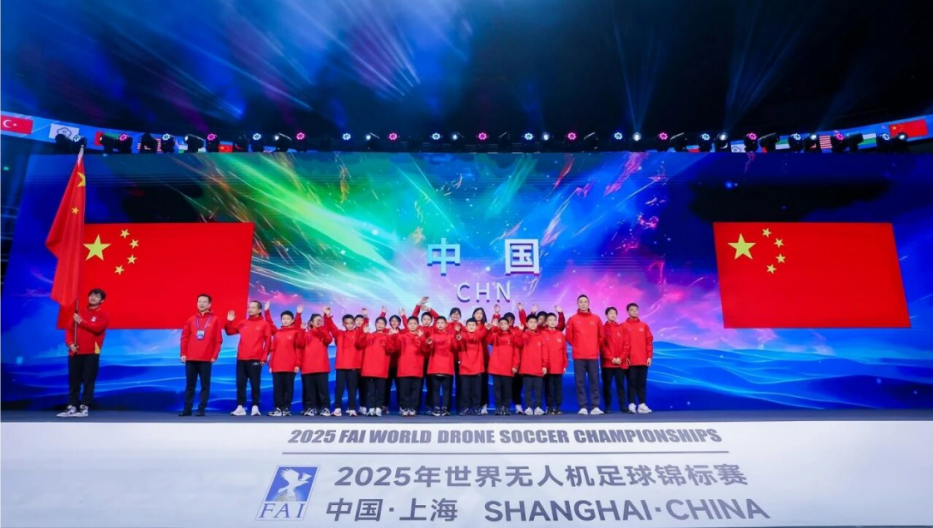
FAI World Drone Soccer Championships 2025 Conclude in Shanghai
2025-11-19 -
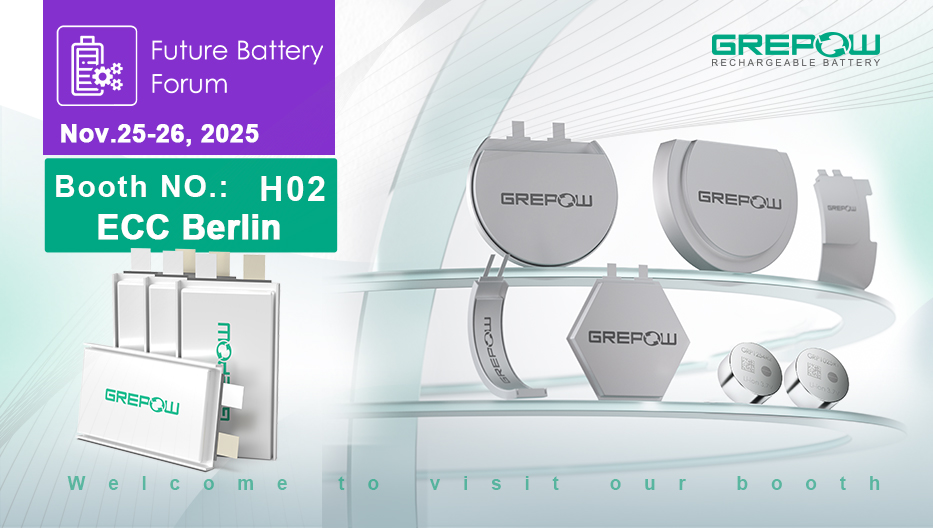
Grepow at Future Battery Forum 2025: Showcasing the Lithium Battery Innovation
2025-11-18 -
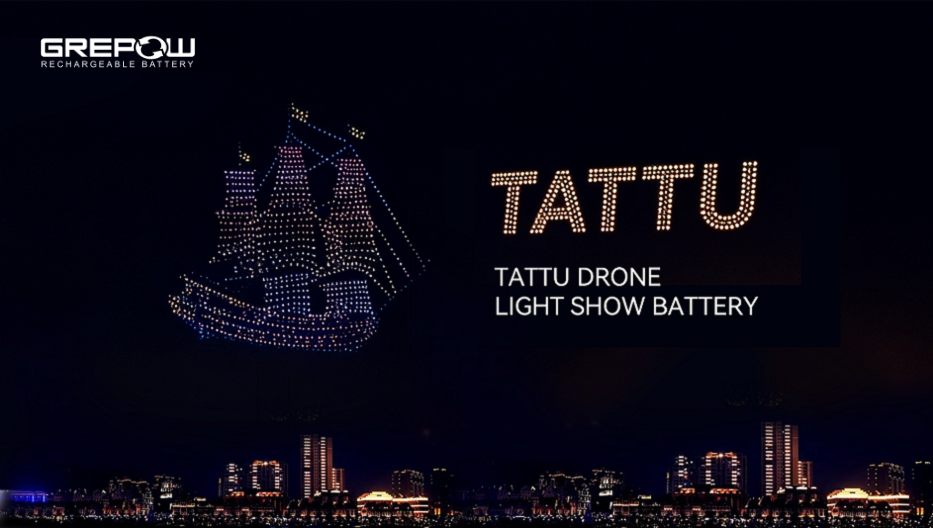
Powering Aerial Artistry: Grepow Battery Solutions Behind Drone Light Shows
2025-10-27
Related products
-

30000mAh 44.4V 12S Semi-Solid State Battery Pack
-
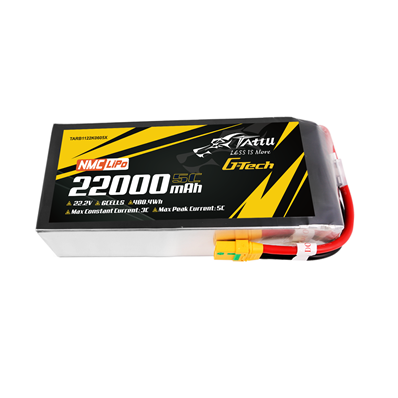
22000mAh 22.2V 6S Semi-Solid State Battery Pack with G-Tech
-
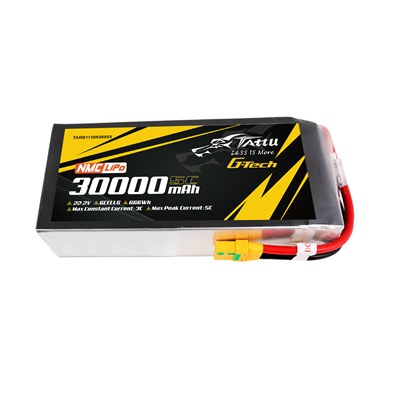
30000mAh 22.2V 6S Semi-Solid State Battery Pack with G-Tech
















































